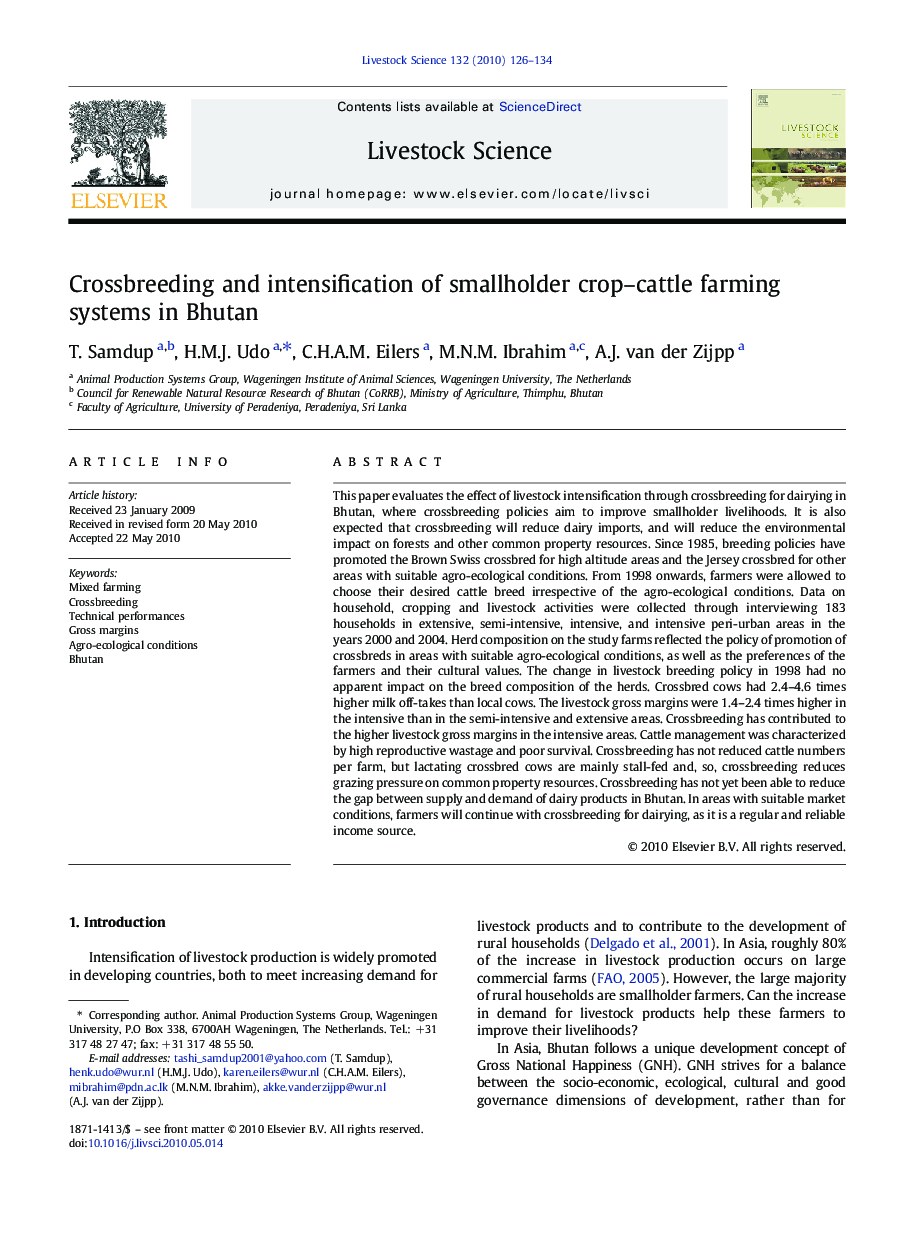| کد مقاله | کد نشریه | سال انتشار | مقاله انگلیسی | نسخه تمام متن |
|---|---|---|---|---|
| 2447762 | 1554000 | 2010 | 9 صفحه PDF | دانلود رایگان |

This paper evaluates the effect of livestock intensification through crossbreeding for dairying in Bhutan, where crossbreeding policies aim to improve smallholder livelihoods. It is also expected that crossbreeding will reduce dairy imports, and will reduce the environmental impact on forests and other common property resources. Since 1985, breeding policies have promoted the Brown Swiss crossbred for high altitude areas and the Jersey crossbred for other areas with suitable agro-ecological conditions. From 1998 onwards, farmers were allowed to choose their desired cattle breed irrespective of the agro-ecological conditions. Data on household, cropping and livestock activities were collected through interviewing 183 households in extensive, semi-intensive, intensive, and intensive peri-urban areas in the years 2000 and 2004. Herd composition on the study farms reflected the policy of promotion of crossbreds in areas with suitable agro-ecological conditions, as well as the preferences of the farmers and their cultural values. The change in livestock breeding policy in 1998 had no apparent impact on the breed composition of the herds. Crossbred cows had 2.4–4.6 times higher milk off-takes than local cows. The livestock gross margins were 1.4–2.4 times higher in the intensive than in the semi-intensive and extensive areas. Crossbreeding has contributed to the higher livestock gross margins in the intensive areas. Cattle management was characterized by high reproductive wastage and poor survival. Crossbreeding has not reduced cattle numbers per farm, but lactating crossbred cows are mainly stall-fed and, so, crossbreeding reduces grazing pressure on common property resources. Crossbreeding has not yet been able to reduce the gap between supply and demand of dairy products in Bhutan. In areas with suitable market conditions, farmers will continue with crossbreeding for dairying, as it is a regular and reliable income source.
Journal: Livestock Science - Volume 132, Issues 1–3, August 2010, Pages 126–134